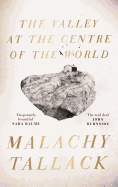
To many people, Shetland is the end of the world: a cold, isolated archipelago off the northeastern coast of Scotland. But to its residents, many of them tied to the land by generations of family history, it's the center: not of urban activity or modern development, certainly, but of their own particular, quiet lives. In his debut novel, The Valley at the Centre of the World, Scottish writer Malachy Tallack brings Shetland and a handful of its residents to life, tracing their movements on, through and around the titular valley.
Tallack (Sixty Degrees North) begins his narrative with Sandy, a young man who settled in the valley with his girlfriend, Emma, but lingers there even after their relationship ends and she moves south. His nearest neighbor and friend is David, Emma's father, a quiet man who carries the history of the valley in his bones. David and his wife, Mary, form the backbone of the tiny community of the valley. Sandy helps David with sheep-shearing and other tasks, learning the ways of crofting and eventually moving into a house of his own.
Like many rural communities, the valley is home to a disappearing way of life: small farmers and crofters find it increasingly hard to make a living, and young people are drawn south to the mainland and its opportunities. Tallack chooses not to pontificate or proselytize about the dangers of industry or the threats to small villages, and the plot tends to meander. Some points eventually move toward resolution; others simply are. Perhaps that's the most compelling argument for both Shetland and Tallack's rendering of it: they simply are, and in their rich, layered existence lies great beauty. --Katie Noah Gibson, blogger at Cakes, Tea and Dreams

